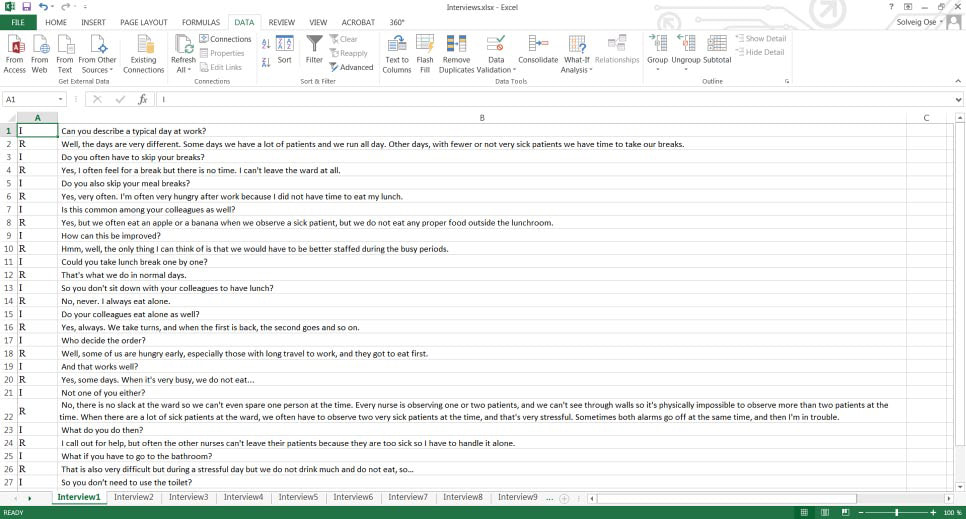The challenge is in the process of finding an efficient method to analyze as many as 38 interviews, comprising first and second interviews from 19 participants. For researchers with similar challenges, I am sharing an article by Solveig Ose (2016) that provides a process to convert the MS Word transcripts of the interviews into tables in Excel for coding and analysis. See the second figure below. This is an illustration of the data copied from Word to Excel. This is part of the qualitative data analysis (QDA) process.

Saldaña, J. (2015). The coding manual for qualitative researchers (Third ed.): Sage.

 RSS Feed
RSS Feed